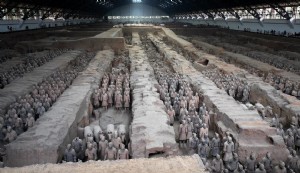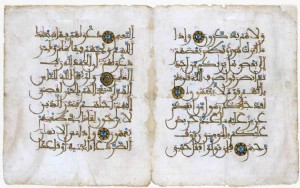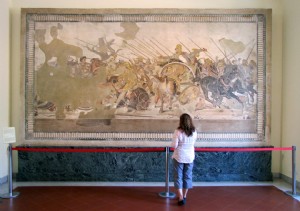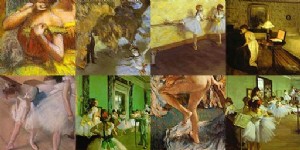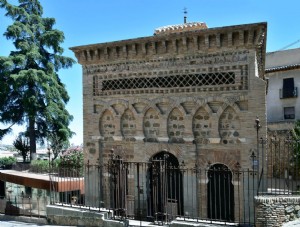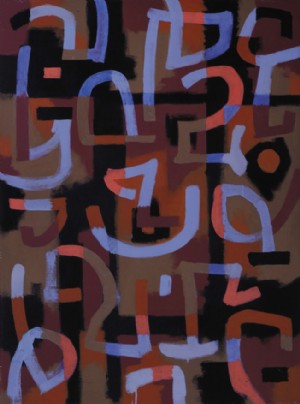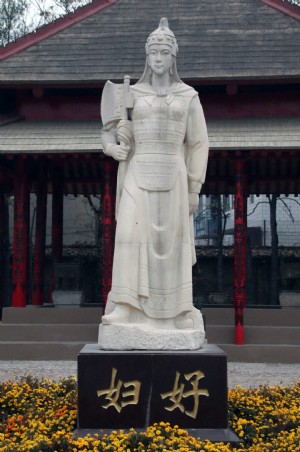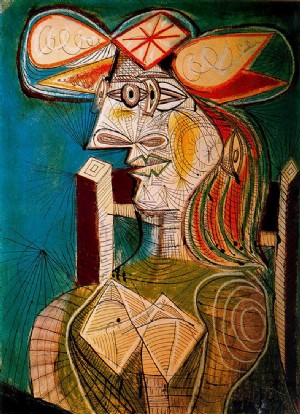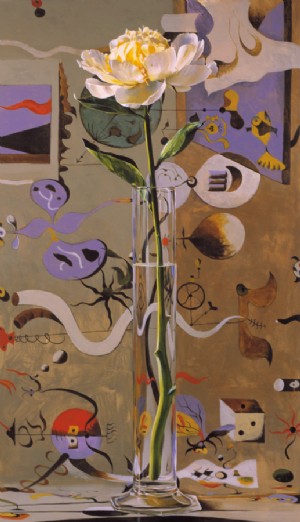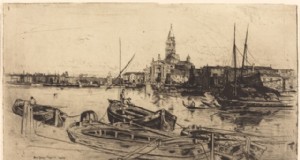Michelangelo Merisi da Caravaggio lahir pada 28 September, 1571 di sebuah desa kecil dekat Bergamo, dengan namanya dia mendapatkan namanya yang tersisa dalam sejarah seni dunia - Caravaggio. Tanggal lahir artis hebat itu hanya diketahui berkat kontrak yang bertahan untuk pelatihannya, disimpulkan oleh orang tua calon seniman dengan pelukis yang agak terkenal Simone Peterzano saat itu. Dokumen, tanggal 1584, menyatakan bahwa pada saat kesimpulannya, Michelangelo Merisi berusia 13 tahun. Peterzano adalah murid dari Titian yang hebat dan tinggal di Milan, di mana karir kreatif Caravaggio dimulai.
Awal dari jalur kreatif
Ibu Michelangelo, Lucia Aratori, adalah istri kedua dari arsitek dan dekorator Fermo Merisi, yang melayani bersama Francesco I Sforza, yang menyandang gelar Marquis da Caravaggio. Secara keseluruhan, keluarga itu memiliki lima anak. Tahun-tahun pertama kehidupan Michelangelo berlalu di Milan, dari mana keluarga melarikan diri kembali ke Bergamo, melarikan diri dari wabah. Benar, epidemi tidak menyayangkan ayah dan paman dari artis masa depan, yang seluruh keluarganya tetap dalam perawatan ibunya, yang sangat membutuhkan.
Memasuki bengkel Simone Peterzano pada tahun 1584, Michelangelo menandatangani kontrak dengan Duke of Colonna, pewaris Marquis da Caravaggio yang meninggal pada tahun 1583. Kolom, yang memutuskan untuk membeli semua karya pelukis muda itu, begitu dia memasuki bengkel Peterzano, menjadi pelindung setia Caravaggio sepanjang hidupnya.
Kepala Gereja Katolik, yang merupakan salah satu pelanggan lukisan terbesar, adalah Paus Sixtus V, yang menyukai tren baru dalam seni, yang baru saja mulai muncul di Lombardy. Pada saat ini, Kadipaten Milan, di bawah kekuasaan Spanyol, menjadi pusat doktrin artistik dan agama yang ketat. Secara khusus, seni Eropa dan Italia berada di bawah aturan tingkah laku, tetapi bersamaan dengan itu ada akademi Bologna-Romawi, terbatas pada tiruan dari pelukis besar Venesia dan Romawi. Di Lombardia, di samping itu, seniman mulai menjauh dari tingkah laku dan fokus pada refleksi kehidupan yang realistis. Tren ini memiliki pengaruh besar pada pembentukan gaya kreatif Michelangelo Merisi.
Sayangnya, kita hanya tahu sedikit tentang kegiatan bengkel Milan Simone Peterzano selama periode ketika Caravaggio datang ke sana. Giovanni Paolo Lomazzo menulis pada tahun 1584 bahwa Peterzano bersukacita karena permintaan yang besar, yang secara konsisten menikmati karya-karyanya, dibuat "elegan dan mudah." Jika Anda melihat lukisan dindingnya di gereja Garegnano dekat Milan, atau di kanvasnya seperti “Venus” atau “Cupid and Two Satyrs” (Koleksi Corsini, New York), Anda dapat melihat pengaruh tingkah laku yang jelas, dicampur dengan realisme Lombard baru.
Dalam karya-karya awal Caravaggio, seseorang dapat dengan jelas melihat pengaruh gaya Peterzano, meskipun kesinambungan sehubungan dengan lukisan-lukisan para empu besar Renaisans, seperti Titian, Giorgione, Giovanni Bellini atau Leonardo da Vinci, juga jelas. Karya yang terakhir, yaitu “Madonna in the Rocks”, Caravaggio, tentu saja, terlihat di gereja San Francesco Grande, Milan. Juga, kembali di Bergamo, artis mengagumi lukisan Lorenzo Lotto, yang menonjol karena ketegangan emosionalnya yang khusus.
Sejarawan seni Mina Gregory dengan meyakinkan membuktikan bahwa seniman muda itu dengan cermat mempelajari karya-karya Andrea Mantegna, yang dengan jelas menunjukkan satu-satunya lukisan dinding yang dilukis oleh Caravaggio, tidak diragukan lagi dilukis di bawah pengaruh gaya lukisan master perspektif yang luar biasa ini. Caravaggio juga berada di Mantua, di mana ia memeriksa karya-karya monumental Giulio Romane.
Sementara itu, di Milan, sekolah yang nyata terbentuk, yang jatuh di bawah pengaruh cara yang indah dari saudara-saudara Campi. Di dalamnya, seniman muda mengembangkan tema karya mereka, berfokus terutama pada kehidupan nyata, dari mana mereka mendapat inspirasi. Lukisan kelompok kreatif ini menggabungkan semua inovasi seni rupa pada masa itu.
Untuk mengetahui efek chiaroscuro, Caravaggio mungkin telah dibantu oleh karya master Renaisans Tinggi Giovanni Girolamo Savoldo, yang dikagumi pelukis muda itu. Kemudian dia membuat potret artis terkenal Sofonisba Anguissola, yang akrab dengan Michelangelo yang hebat di masa mudanya. Sofonisba menciptakan adegan bergenre yang diambil dari kehidupan sehari-hari. Kita bisa melihat di salah satu lukisannya, dibuat oleh batu bara dan kapur, gambar putra kecilnya, yang kankernya digigit jari. Gambar inilah yang mendorong plot Caravaggio muda dari lukisan pertamanya, yang dia lukis segera setelah tiba di Roma.
Sayangnya, kita hanya dapat berbicara secara hipotetis tentang formasi kreatif Caravaggio. Menurut sejarawan seni Berenson, Giorgione sangat penting bagi perkembangan gaya Caravaggio. Pengaruh sekolah Lombard juga terbaca dengan jelas. Roberto Longy menulis:“Untuk waktu yang lama di Milan, sekelompok seniman yang berasal dari Lombardy dihormati yang menciptakan seni demokrasi sederhana… Dalam lukisan mereka ada banyak perasaan manusia, cahaya batin dan tidak ada ekstase religius sama sekali; keputusan warna, efek hitam-putih dikoordinasikan di antara mereka sendiri dan diverifikasi dengan alam. Itu adalah seni realistis yang berusaha untuk menggambarkan secara sederhana dan benar-benar alam dan manusia. ”
Peterzano, yang merupakan guru yang sangat progresif pada masanya, juga memainkan peran penting dalam pembentukan gaya artistik Caravaggio. Dalam pelatihan, dia fokus pada teknik melukis, tanpanya tidak mungkin mencapai ketinggian keunggulan.
Hampir mencapai usia 18 tahun, Caravaggio, penuh kerinduan untuk bekerja secara mandiri, pindah ke Roma. Rute perjalanannya tidak diketahui, kita hanya bisa berasumsi bahwa di sepanjang jalan dia melihat banyak karya master besar. Di Roma, prelatus Pandolfo Pucci menyediakan perlindungan bagi seorang pemuda. Karya pertama Caravaggio memiliki plot sederhana:"A Boy Bitten by a Lizard" (1594, Galeri Nasional, London), “Seorang Pemuda dengan Sekeranjang Buah” (1593, Galeri Borghese, Roma), "Seorang Bocah Membersihkan Pir" (1593).
Potret diri pertama Caravaggio dianggap sebagai lukisan "Musisi" (1595, Museum Seni Metropolitan, New York), di mana artis menggambarkan dirinya bersama dengan dua musisi muda lainnya dan Cupid di latar belakang. Banyak sejarawan seni menganggap gambar Amur semacam simbol homoerotik, menunjukkan kegemaran Caravaggio terhadap homoseksualitas. Segera, pelukis menjadi sakit parah, tetapi secara ajaib pulih dan, hampir segera, melukis lukisan "Little Sick Bacchus" (1953, Galeri Borghese, Roma), yang merupakan potret dirinya yang kedua.
Caravaggio disponsori oleh Kardinal del Monte yang berkuasa, untuk siapa seniman menciptakan sejumlah lukisan religius. Dalam lukisan "Magdalena yang menyesal" (1595-1597, Galeri Doria Pamphili, Roma) kita melihat gambar wanita pertama yang dibuat oleh artis. Pada periode yang sama, pelukis menciptakan "Bacchus" keduanya (1596, Galeri Uffizi, Firenze), kali ini penuh dengan kesehatan. Segera, Caravaggio memprovokasi yang pertama, tapi jauh dari yang terakhir, berbenturan dengan keadilan.
Tapi mengapa artis muda itu memilih Roma? Penulis biografi Caravaggio setuju bahwa pilihan ibukota budaya Italia, dan karena itu seluruh dunia, adalah karena ambisi yang luar biasa dari Caravaggio, yang bermimpi menjadi artis terhebat sepanjang masa. Apakah karena dia melanggar hukum berkali-kali karena dia percaya bahwa dia - yang dikaruniai Tuhan lebih dari orang-orang di sekitarnya - diizinkan segalanya?
Roma pada waktu itu benar-benar berkembang. Pembangunan Basilika Santo Petrus, yang pada tahun-tahun itu merupakan struktur arsitektur terbesar di seluruh dunia, baru saja selesai. Basilika besar didirikan, seperti San Giovanni Laterano, Santa Maria Maggiore, pelabuhan Ripetta di Tiber dibuka, yang benar-benar menjadi pintu gerbang dunia. Paus Sixtus V mengundang semua pelukis berbakat di semenanjung itu untuk datang ke Roma, dan banyak, termasuk Lombard, mengikuti banding ini. Semua ini dimaksudkan untuk menyampaikan kepada seluruh dunia kemenangan Kekristenan.
Seperti banyak tentang kehidupan Caravaggio, kita tidak tahu tanggal pasti kedatangannya di Roma. Mungkin tahun 1591 atau 1592. Ada banyak bukti bahwa seniman itu tiba di Kota Abadi di bawah Paus Klemens VIII.
Seniman muda yang tiba di Roma kemungkinan besar membawa beberapa kanvas yang dilukis di Milan. Tapi karya-karya ini, dengan interpretasi realistis mereka tentang karakter dan plot, hampir tidak dapat membangkitkan minat masyarakat setempat, yang seleranya kemudian menentukan tingkah laku dan klasisisme. Cinta yang besar di Roma menikmati salinan karya Michelangelo dan Raphael. Adalah penting bahwa pelukis yang sangat populer pada waktu itu, seperti Agnesti, Siolante, Tadeo Zuccaro, Menyelamatkan, Rafaelino da Reggio, Cesars Nebbia atau Giuseppe Cerzi, hanya meninggalkan sedikit jejak dalam sejarah seni rupa dunia.
Sejarawan seni Callab menulis:“Para seniman muda yang tiba di Roma pada akhir abad keenam belas, tidak hanya harus membatasi diri mereka pada tiruan lukisan oleh para empu tua, tetapi juga mewarisi idealisme mereka, rasa takut artistik, dan takut meninggalkan cara penggambaran permukaan yang kosong. Dalam melukis, para seniman ini hanya puas dengan kemiripan eksternal. "Untuk bertahan hidup, mereka dipaksa untuk tunduk pada selera publik dan hanya terlibat dalam dekorasi kehidupan. Contohnya adalah karya Annibale Carracci, yang datang ke Roma dari Bologna. Dia ditugaskan untuk mendekorasi galeri di Palazzo Farnese. Sudah dalam proses mengerjakan implementasi rencana kreatifnya, dia menghadapi kesulitan besar dan ketidakpercayaan dari pelanggan dan masyarakat.
Hal yang sama terjadi dengan Caravaggio. Dia meringkuk di daerah miskin kota, di tempat yang sama dengan banyak imigran lain dari Lombardy, artis pengangguran yang sama, pematung dan tukang batu yang mencoba bertahan untuk mengantisipasi pesanan. Segera, pelukis berhasil memasuki layanan Lorenzo Siciliano, di studio tempat dia bertemu dengan rekan senegaranya, saudara-saudara Longo.
Selama periode ini, Caravaggio dan rekan-rekannya menghabiskan hari-hari mereka di tempat kerja, menjelajahi pedesaan dan bersenang-senang. Para peneliti sia-sia mencari karya-karya seniman periode ini. Mungkin dia menulis sesuatu untuk dirinya sendiri, tetapi, jelas sekali, lukisan ini tidak menemukan pembeli.
Dan lagi, Caravaggio tersenyum pada keberuntungan sebagai seorang dermawan kaya, seorang pria dengan selera seni yang bagus, tetapi dengan reputasi yang meragukan, prelat pengadilan kepausan, Monsinyur Pandolfo Pucci. Dia adalah saudara dari seorang kardinal, siapa, omong-omong, juga merawat Benvenuto Cellini yang "pemalu".
Prelatus itu terpesona oleh ketangkasan, bakat seniman muda dan pantang menyerahnya, karakter eksplosif. Pucci mengundang Caravaggio ke rumahnya, memastikan keberadaannya. Artis, untuk bagiannya, sebagai rasa terima kasih atas kebaikan prelatus itu, harus melakukan pekerjaan untuknya menyalin lukisan gereja saleh terbaik. Monsinyur Pucci mengirimkan semua karyanya ke Biara Kapusin di Recanati, di mana ia pernah lahir dan menghabiskan tahun-tahun awal hidupnya. Tidak ada satu pun karya dari seri ini yang sampai ke kita.
Gaya dan Tema
Dengan banyak waktu luang dan kebebasan kreatif yang lengkap, Caravaggio dapat memilih plot apa pun untuk karyanya dan merenungkannya untuk waktu yang lama. Sekarang kita tahu pasti bahwa lukisan seniman "A Boy Bitten by a Lizard" (sekitar tahun 1954, Galeri Nasional, London dan, pilihan kedua, Longy Foundation di Florence) diciptakan selama dia tinggal bersama Monsignor Pucci. Gambar itu semacam kenang-kenangan pada gambar arang terkenal Sofonisba Anguissola. Pemuda di kanvas digambarkan pada saat kadal menggigitnya, dan dia dengan takut menarik tangannya. Untuk pertama kalinya dalam melukis, sebuah momen gerakan direnggut dan direkam.
Menurut Berenson, dalam karya Caravaggio ini ada "kebutuhan universal akan inovasi, " keinginan untuk menghancurkan konvensi. Mungkin sebuah alegori juga bersembunyi di sini:bahu telanjang bocah itu dan bunga di belakang telinganya, menunjukkan pemuda itu milik kelas bawah Romawi - dunia pelacur dan pencuri, yang Caravaggio terkait dengan rasa sakit fisik dan penderitaan yang selalu menyertai cinta. Sepanjang karir artis, gambaran penderitaan fisik terkait erat dengan penderitaan spiritual dan mental.
Caravaggio juga menulis "Pemain Lute" yang terkenal selama dia tinggal bersama Pucci. Sekarang gambarnya ada di Hermitage, di Sankt Peterburg. Citra seorang musisi sangat khas dari model yang dipilih oleh artis. Ada versi lain dari kanvas, itu disimpan di Metropolitan Museum of Art, di New York. Di atasnya kita melihat anak laki-laki bermain yang sama, tapi kami tidak melihat ada bunga atau buah di sebelahnya.
Sungguh menakjubkan ketelitian sang seniman dalam menulis alat musik. Wajah melamun dari pemain kecapi, kelesuan dalam tatapannya, semua menunjukkan bahwa pemuda itu terbawa imajinasi ke dalam dunia batinnya yang dalam. Anda dapat membaca tulisan yang menarik pada skor di gambar Hermitage:"Voi sapete chio vato" ("Kamu Tahu Aku Mencintaimu"). Saya ingin tahu siapa yang mengirim pengakuan ini? Dalam gambar "Musisi", latar depan juga menggambarkan skor yang dibuka kepada penonton, yang dipegang oleh penyanyi setengah telanjang. Tapi di sini tulisan yang dibuat oleh tangannya, sampai saat ini belum ada yang bisa membaca.
Fakta bahwa semua karya periode ini, Caravaggio hanya terinspirasi oleh pria muda (gambar wanita tidak ada), juga menunjukkan orientasi artis yang tidak konvensional. Gambar wanita pertama dalam karyanya adalah lukisan "Pertobatan Magdalena", dilukis sekitar tahun 1596.
Tidak diketahui mengapa Caravaggio meninggalkan rumah Monsignor Pucci. Mungkin prelatus itu memiliki watak yang sangat berat. Artis itu kembali muncul di jalan-jalan Romawi, kehilangan mata pencaharian. Untung, teman lama pelukis, yang bekerja dengannya di bengkel Lorenzo Siciliano - artis Antiveduto Gramatica, melindungi Caravaggio yang tunawisma dan miskin. Grammar menikmati beberapa kesuksesan dengan publik, jadi itu disediakan dengan pesanan biasa.
Tapi kemalangan menghantui Caravaggio yang malang, dia jatuh sakit dengan demam Romawi, yang merajalela di seluruh semenanjung. Seorang teman seniman Longo membawanya ke rumah sakit biara Santa Maria della Consolation, di mana mereka membawa mereka yang tidak memiliki sarana untuk membayar pengobatan. Di sana, Caravaggio ditempatkan di ruang bawah tanah, yang dianggap sebagai hukuman mati.
Secara tidak sengaja, artis menarik perhatian rumah sakit sebelumnya, Senor Conteras Spanyol, teman baik Monsinyur Pucci, yang lewat dan mengenali Caravaggio. Conteras meminta untuk memindahkan pelukis yang sakit parah itu ke ruangan lain dan memerintahkan untuk tidak meninggalkan perawatnya. Ini saja menyelamatkan hidup artis.
Tapi tema kematian dan penyakit, untuk selanjutnya, sebagai gema jauh dari pengalaman, dapat dilihat di banyak kanvasnya, Misalnya, dalam Asumsi Maria. Sebagai rasa syukur atas keselamatannya, Caravaggio dicat untuk lukisan Contares, tetapi, Sayangnya, mereka, seperti banyak karyanya yang lain, belum mencapai hari-hari kita.
Enam bulan dihabiskan di rumah sakit, rasa sakit dan ketakutan, penyakit yang menyertainya meninggalkan bekas yang dalam di jiwa artis. Saat itulah Caravaggio menciptakan salah satu karyanya yang paling terkenal, “Bachu yang sakit.” Sosok Bacchus ditampilkan dalam gambar cermin:bengkak, wajah pucat dan mata kusam menunjukkan kondisi serius artis itu sendiri setelah sakit. Dalam “Sick Bacchus” kita melihat dewa yang tidak lagi bisa menikmati kesenangan hidup, bersenang senang lah.
Lukisan itu dilukis di bengkel salah satu pelukis paling terkenal di Roma, angkuh Cesare d'Arpino, yang melindungi Caravaggio di rumahnya. Cesare d'Arpino tidak jauh lebih tua dari Caravaggio sendiri, tetapi sudah dikenal sebagai favorit masyarakat kelas atas dan bahkan diadopsi di istana kepausan. Milik salah satu asosiasi seni paling populer di ibukota Italia - Academy of the Reckless (yang juga termasuk penyair seperti Batista Laura, Paus Urban XVII masa depan dan Torquato Tasso), d'Arpino lebih memilih yang ilahi daripada yang rasional. Sebagai rasa terima kasih atas tempat penampungan, Caravaggio harus membawa karangan bunga dari daun dan bunga untuk lukisan dinding Cesare d'Arpino. Pada kesempatan ini, kontrak bahkan ditandatangani. Mural orang-orang sezaman Caravaggio diakui sempurna.
Di rumah Cesare d'Arpino Caravaggio bertemu banyak dermawan kaya Roma:kardinal, pedagang, duta besar, serta artis terkenal yang memiliki reputasi baik:Van Dyck, Jan Brueghel dan, mungkin, Rubens. Diantaranya adalah Valentine, yang baru-baru ini menarik perhatian seorang seniman muda dari Prancis. Ada anggapan bahwa kemudian Valentin diam-diam dikeluarkan dari bengkel Cesare d'Arpino dan menjual beberapa karya Caravaggio.
Sekitar waktu itu, pelukis menciptakan karya agungnya sendiri - "Pria Muda dengan Sekeranjang Buah", yang kemudian dipersembahkan oleh Paus Paulus V. kepada keponakannya Shipione Borghese. Kedua lukisan (ini dan "Sick Bacchus") berada di bengkel angkuh Cesare d'Arpino 1607 tahun. Kemudian, mereka disita oleh agen Paus Paulus V, yang naik takhta setelah Paus Klemens VIII, dalam pelunasan utang.
Tidak memiliki penghasilan tetap, Caravaggio meminta bantuan Valentin, dan dia menyarankan saya untuk menulis lukisan religi. Memang, permintaan lukisan gereja sangat besar. Caravaggio menerima tawaran itu, dia menerima cat dan kuas, tetapi setelah beberapa saat dia membawa agen pekerjaan non-religius di "Bacchus" keduanya.
Di kanvas ini kita melihat dewa kuno berupa seorang pemuda berkulit tebal yang penuh dengan kesehatan, dengan karakteristik untuk banyak karakter artis agak berat selama berabad-abad. Kepala Bacchus dihiasi dengan karangan bunga tradisional tanaman merambat, di tangannya ada segelas anggur, dan di atas meja kita melihat botol setengah kosong. Tetapi ada nuansa lain - daun yang sedikit layu dalam karangan bunga, buah basi manja, yang membuat pemirsa yang penuh perhatian berpikir.
Penulis biografi Caravaggio Giovanni Ballone akan menulis:“Bacchus dengan beberapa cabang anggur yang dicat dengan warna berbeda ditulis dengan sangat hati-hati, serta dengan ketajaman dan kekeringan tertentu; lukisan ini berasal dari saat Caravaggio mencoba hidup dengan uangnya sendiri, menjual lukisannya. “Pada tahun 1916, karya ini ditemukan kembali oleh Roberto Longy, yang menemukannya di gudang Galeri Uffizi.
Bakat luar biasa Caravaggio dihargai dengan penundaan 300 tahun. Tidak diketahui secara pasti apakah pelanggan menerima Bacchus atau karyanya tidak pernah dijual; dalam hal apapun, implementasinya tidak dapat membantu master memecahkan masalah materinya. Valentine, yang percaya pada bakat artistik Caravaggio yang luar biasa, membujuk artis untuk menerima perintah untuk pelaksanaan karya konten keagamaan, tapi yang keras kepala, terlepas dari segala, mulai mengerjakan pekerjaan baru - dia menulis The Fortune Teller.
Di kanvas kita melihat pemandangan jalanan, atau salah satu episode teater rakyat. Valentine membayar Caravaggio untuk 30 pencurinya! Kemudian, karya tersebut disumbangkan oleh Pangeran Doria-Pamphili kepada Raja Prancis Louis XIV dan saat ini disimpan di Louvre.
Pemeriksaan sinar-X terhadap karya tersebut menunjukkan bahwa di bawah gambar peramal muda itu ada gambar sebelumnya dengan cara yang dekat dengan Cesare d'Arpino. Mungkin Caravaggio hanya menghemat uang di atas kanvas. Vulgaritas adegan ini mengejutkan artis sezaman, tapi dialah yang kemudian menginspirasi pelukis lain - orang Prancis Georges de Latour, untuk membuat gambar dengan nama yang sama dan plot yang sama. Setelah menerima uang, Caravaggio segera bergegas menuju petualangan, perkelahian, dan perkelahian, yang memaksa polisi kepausan untuk kembali melakukan pengawasan ketat terhadap hidupnya.
Apa yang terjadi selanjutnya? Bagaimana Valentine berhasil membujuk artis bandel untuk kembali ke jalan yang benar? Mungkin, dalam perjuangan melawan watak pemberontak Caravaggio ini, ia menggunakan nama salah satu kolektor seni terkaya pada periode ini - Kardinal Francesco Maria del Monte. Akhirnya, pelukis setuju untuk menulis untuk kardinal sebuah gambar dengan tema keagamaan, yang menjadi yang pertama dalam karyanya.
Benar, artis mengatur kondisinya:kebebasan penuh dalam memilih topik. Caravaggio segera menolak untuk menulis adegan tradisional penyaliban dan kemartiran. Sebagai objek gambar, artis memilih tema ekstasi, sesuai dengan cara bergambar dan temperamen artistiknya. Dia memulai karya monumental Ecstasy of St. Francis. Caravaggio dengan tegas mengambil alih pembuatan kanvas, menetap di ruang bawah tanah rumah Valentine untuk menyelesaikan tugas yang sulit ini baginya sesegera mungkin.
Karya itu harus sangat artistik, karya luar biasa yang dapat membuka pintu Caravaggio ke koleksi pecinta seni Romawi utama. Pada waktu bersamaan, dia akan membuatnya terkenal dan membantu mendapatkan bantuan dari orang-orang kaya dan berwibawa. Peneliti modern dari karya seniman menganggap Ecstasy of St. Francis sebagai karya matang pertama Caravaggio.
Jenius inovasi
Karya “Ekstasi St. Fransiskus” menimbulkan banyak kontroversi dan diskusi. Penulis Dominic Fernandez melihat dalam dirinya kelahiran Barok asli. Plot gambar terungkap dengan latar belakang hutan malam. Di latar belakang, Caravaggio menggambarkan gembala sederhana yang menyalakan api. Dalam terangnya, sosok santo pendamping tidur, saudara Leon, jelas muncul. Santo Fransiskus mengungkapkan stigmata dalam keadaan ekstase mistik.
Tidak seorang pun sebelum Caravaggio menggambarkan adegan ekstasi religius seperti ini:seorang suci berbaring di pelukan seorang malaikat, citra yang diwujudkan dalam bentuk seorang pemuda yang menggoda, sangat mengingatkan pada model favorit pelukis. Sosok bidadari, terlepas dari sayap di belakangnya, tidak melambung, tapi seolah-olah, jatuh ke tanah. Mencoba menemukan cara ekspresif dan ekspresif baru, artis meningkatkan permainan cahaya dan memecahkan seluruh komposisi sebagai pemeragaan teater, mencoba dengan cara ini untuk mencapai tidak hanya efek artistik yang signifikan, tetapi juga lebih persuasif.
Ekstasi Santo Fransiskus melakukan pekerjaannya - meletakkan dasar bagi ketenaran Caravaggio sebagai pelukis religius. Karya-karya monumental lainnya oleh seniman diikuti, seperti Pertobatan Saulus dari Gereja Santa Maria del Pololo. Kardinal del Monte, mengapresiasi inovasi pelukis, mengundang Caravaggio ke Palazzo Madama.
Francesco Maria del Monte adalah Duta Besar Adipati Tuscan di istana Pantifex Maximus. Tempat tinggalnya terletak di Villa Medici. Kardinal adalah orang yang sangat terpelajar:dia tahu bahasa Ibrani, Yunani kuno dan bahasa timur lainnya. Dia adalah penggemar berat musik dan lukisan, selalu terbuka untuk ide-ide baru. Terima kasih untuk ini, Caravaggio membuat kesan yang baik padanya, dan kardinal memberinya kebebasan kreatif dan konten penuh. Tinggal di istana Madama dan dianggap sebagai murid kardinal, Caravaggio berubah menjadi artis yang dicari dan terkenal. Benar, mereka tidak hanya mengaguminya, tapi juga membencinya.
Terlindungi dari segala musibah, disediakan dengan baik, dan bahkan mungkin jatuh cinta, artis mulai terbiasa dengan kehidupan yang tenang. Yang, Namun, tidak mempengaruhi ketajaman dan ketajaman bahasa gambarnya, yang terus-menerus diasah. Dia asyik mencari adegan paling dramatis, dan mewujudkan ide-idenya, dia menggunakan banyak kontras, permainan cahaya dan bayangan, memberikan vitalitas dan persuasif pada lukisannya.
Sementara itu, pergantian abad semakin dekat. Tata krama sebagai gerakan seni berangsur-angsur menurun:Renaisans telah menjadi sejarah. Saat itu Edict of Nantes, yang mengakhiri perang agama di Eropa. Prancis dan Italia mengadakan aliansi:Henry IV menikahi Maria Medici. Michelangelo Merisi, yang sekarang mengambil nama Caravaggio, saat ini berusia 25 tahun.
Menjadi murid kardinal, yang dengan senang hati memperoleh sebagian besar karyanya, artis dapat sepenuhnya menyerah pada inspirasi - "kemarahan saat ini". Dia mulai menulis tidak hanya agama, tetapi juga genre lukisan. The "Penitent Magdalene" oleh Caravaggio secara mengejutkan nyata. Ngomong-ngomong, seorang model dari jalanan bernama Julia menjabat sebagai model untuk pelukis. Dua tahun kemudian, dia menciptakan lukisan "Peredaran Magdalena", yang dibedakan oleh studi yang lebih teliti dari semua detail.
Di rumah Kardinal del Monte Caravaggio menulis lukisan benda matinya yang terkenal "Keranjang Buah". Keranjang yang melayang di atas meja tampaknya bahan yang luar biasa. Selain buah-buahan segar, tuannya "mengisinya" dengan buah-buahan yang terlalu matang dan daun yang layu. Kanvas ini pernah menghiasi koleksi del Monte, kardinal hanya kemudian menemukannya di bengkel pria Cesare d'Arpino, yang diberikan oleh seniman itu sendiri, sebagai kompensasi hutang. Kemudian mereka lupa tentang benda mati Caravaggio. Sampai saat ini, "Keranjang Buah" adalah bagian dari sekolah seni lukis Belanda. Hanya studi ilmiah tahun 1919 yang dilakukan oleh Longy yang membuktikan kepenulisan Caravaggio.
Segera, artis meninggalkan Palazzo Madama dan pindah ke rumah Kardinal Maffeo Barberini, yang merupakan salah satu pelanggan Valentin. Dipengaruhi oleh nasihat dan bimbingan konstan dari temannya, Caravaggio kembali beralih ke pengembangan topik agama, tanpa kehilangan kepercayaan pada ide dan prinsipnya. Seniman mencari situasi dramatis dalam sejarah dan kehidupan, memperkuat mereka dengan sandiwara solusi komposisi, dengan kontras cahaya dan bayangan yang luar biasa, memberikan karya-karyanya suara yang sama sekali baru.
Karya “Mengambil Kristus ke dalam tahanan” (Galeri Nasional, Dublin, Irlandia) dan "The Donation of Isaac" dikhususkan untuk cerita-cerita dari sejarah alkitabiah. Yang paling menarik dalam “The Donation of Isaac” adalah interpretasi humanistik yang tinggi tentang gambaran seorang malaikat yang menampakkan diri kepada Abraham, membawa belati ke atas putranya. Malaikat itu memberi isyarat kepada domba jantan itu, yang harus diletakkan di atas mezbah, bukan anak laki-laki itu.
Dalam lukisan "St. Catherine dari Alexandria" sang seniman menggambarkan di latar belakang roda siksaan yang menakutkan dengan paku baja. Caravaggio dengan ahli menyeimbangkan komposisi dengan menghubungkan bagian gelap dan terang. Pekerjaan, yang untuk beberapa waktu berada di koleksi del Monte, dijual oleh ahli warisnya kepada keluarga Barberini, dari mana ia kemudian jatuh ke dalam koleksi Thyssen-Bornemisza pada tahun 1935.
Lukisan "Yohanes Pembaptis" termasuk dalam periode yang sama, yang penciptaannya terinspirasi oleh sosok-sosok pemuda telanjang Michelangelo dari Kapel Sistina. Dia juga menulis Maria Magdalena yang lain, dilakukan dengan cara para master Venesia ("Pertobatan Magdalena"). Di kanvas ini, selain Magdalena, bersandar pada cermin bulat besar, kita melihat karakter lain - Marta, yang diperkenalkan oleh Caravaggio. Model untuk Martha adalah Filis Melandrone, yang bekerja dengan artis dan saat menulis St. Catherine.
Permintaan pribadi sang kardinal yang mendesak dan permintaan yang besar akan lukisan religi memaksa sang pelukis untuk terus mengerjakan karya-karya dengan tema-tema alkitabiah. Semua karya berikutnya memberikan pukulan telak terhadap arah fundamental seni Eropa - tingkah laku.
Segera, Caravaggio memutuskan untuk menulis kanvas di salah satu momen terburuk dalam sejarah Yahudi yang dijelaskan dalam Perjanjian Lama. Dia menulis Judith dan Holofernes, di mana ia menggambarkan momen ketika Judith dipenggal oleh tiran Asyur, Holofernes. Model untuk Judith juga Filis Melandrone. Mulanya, artis itu menggambarkan Judith dengan payudara telanjang, tapi selanjutnya, dipaksa untuk "menutupi" dia dengan korsase. Agak jauh dari pahlawan wanita sedang menunggu seorang pelayan tua. Dia siap memegang serbet linen untuk membungkus kepala korban di dalamnya. Gambar pelayan tua dibuat oleh Caravaggio di bawah kesan "Kepala Orang Tua" Leonardo da Vinci.
Lukisan "Istirahat dalam Penerbangan ke Mesir" dengan jelas menunjukkan penerimaan dan penolakan tradisi lukisan religius. Rambut cokelat Bunda Allah kontras dengan ikal merah muda dari Bayi Yesus. Seorang malaikat yang ditulis dari belakang memainkan cello; tatapannya tertuju pada skor yang dipegang Joseph. Artis itu menggambarkan suami Perawan Maria tanpa alas kaki dan berjanggut abu-abu, dia duduk di atas tas, di sebelahnya kita melihat sebotol anggur setengah mabuk. Berfungsi sebagai latar belakang, lanskap membingkai seluruh komposisi. Dia dan pola bunga dan daun secara gaya dekat dengan lukisan Giorgione, tetapi, tentu saja, Caravaggio melampaui dia dengan kekuatan bakatnya.
Kanvas "Istirahat di Jalan ke Mesir" dianggap ambigu oleh publik dan menerima berbagai peringkat. Namun, kardinal memberi Caravaggio perintah baru untuk mengecat langit-langit kediamannya (saat ini, ada vila Boncompany Ludovisi). Artis menyelesaikan pesanan pada pertengahan 1590-an. Lukisan ini masih merupakan satu-satunya karya Caravaggio yang dikenal di bidang lukisan dinding. Pelukis menunjukkan keterampilan luar biasa dalam memiliki perspektif. Angka-angka Yupiter, Neptunus dan Pluto, digambarkan olehnya dalam lukisan dinding, bersaksi tentang kemampuan luar biasa dari artis berusia 26 tahun itu. Meskipun karya itu diterima dengan sangat baik oleh para penikmat seni yang tercerahkan, Valentine mengharapkan lebih banyak dari sang seniman. Dia membantu Caravaggio membuat kontrak besar untuk melukis adegan-adegan dari kehidupan Rasul Matius dari gereja Roma terbesar di San Luigi dei Francesi.
Di bawah kontrak ini, sang seniman membuat dua kanvas monumental - "Kemartiran Rasul Matius" dan "Pemanggilan Rasul Matius", yang masih menghiasi gereja San Luigi dei Francesi, terletak di tempat yang sama di mana mereka diidentifikasi selama waktu artis. Mereka adalah bukti nyata dari tahap baru dalam kehidupan dan karya Caravaggio.
Ansambel yang indah ini adalah yang terbesar dari semua yang dilakukan dalam kehidupan artis. Dan hasil karyanya sangat mencengangkan. Karya-karya monumental yang ditulisnya, yang didasarkan pada pandangan inovatif pada subjek-subjek alkitabiah, menimbulkan perdebatan sengit, baik di kalangan pendeta maupun di kalangan penikmat seni. Ini tidak mengherankan, mengingat bahwa pada awal abad XVII lukisan dan lukisan dinding gereja menjadi sorotan dan menimbulkan minat yang besar tidak hanya di kalangan pendeta, tetapi juga di antara semua pecinta lukisan, jadi semua orang sangat ingin melihat karya-karya baru para pelukis.
Kisah ordo ini agak tidak biasa. kardinal Matteo Contarelli, yang ingin mendedikasikan kapel untuk St. Matthew, pelindung surgawinya, mengundang pelukis dan pematung untuk mendekorasi gereja. Pekerjaan itu belum selesai pada saat kematian kardinal, dan pertanyaan tentang penyelesaiannya dibahas lebih lanjut di berbagai dewan gereja. Di antara seniman yang terlibat dalam kapel Contarelli, Girolamo Muziano dan pria terhormat Cesare d'Arpino, yang melukis kubah dan langit-langit gereja dengan pemandangan dari kehidupan orang suci, harus dicatat. Dia akan melukis semua dinding kapel, tetapi untuk alasan yang tidak diketahui tidak dapat terus bekerja. Penyelesaiannya dipercayakan kepada Caravaggio. Kontrak tertanggal 25 Juni 1599, yang ditutup dengan artis, telah bertahan. Menurut dia, Caravaggio menerima hadiah 400 scudo.
Faktanya, tidak jelas mengapa pilihan jatuh pada Caravaggio, dan tidak pada yang lain, lebih terkenal pada tahun-tahun itu, master Romawi. Mungkin, the mediation of the artist’s all-powerful patrons:Cardinal del Monte and the wealthy Genoese philanthropist and aristocrat Vincenzo Giustiniani played a large role here. Of course, the painter was flattered by the honor shown to him, and immediately set to work. But here one problem became clear:Masses regularly served in the chapel of Contarelli, and therefore it was impossible to establish the forests necessary for creating large-format compositions. Caravaggio offered his way out of the situation - he decided to make large-format oil paintings on canvas of 3.40 x 3.24 meters in oil! None of his contemporaries have yet completed orders of this magnitude. After a little thought, the clergy agreed.
The painter did not meet the deadlines stipulated by the contract and submitted his work several months later. He completed the “Martyrdom of the Apostle Matthew” in time for early 1600. Caravaggio repeatedly changed the composition of the canvas in search of the most successful solution. The painter depicted the scene, which took place in the courtyard of the king of Ethiopia, who ordered the execution of St. Matthew, who preached the gospel there. The executioner, holding his sword at the ready, was already bending over the resisting martyr to kill him. An angel extends to the saint a palm branch - the emblem of martyrdom for faith. In the distance stands a young man with a tender face, involuntarily trying to distance himself from the terrible scene that is taking place. The fleeing boy turns away, his face expresses unspeakable horror. In one of the characters of the canvas, Caravaggio himself can be seen as a witness to this crime - a middle-aged man with a beard and an exhausted expression on his face. This is the artist’s third self-portrait.
The painting “Martyrdom of the Apostle Matthew” conquers, first of all, with realistic authenticity, emotional richness and utmost convincingness of images. Hermann Foss writes:“At a time when Caravaggio began to use the lighting method he invented in developing multi-figure compositions, he felt the need to abandon the linear-planar image means used by Zuccaro and Giuseppino. His competitors did not hesitate to make critical judgments. One of the theorists of Roman mannerism, the artist Zuccaro, spoke as follows:“A lot of noise from nothing! I see nothing here but a copy of the Giorgione style! ”
Recognition of talent
The painting “The Calling of the Apostle Matthew”, executed a few months later and set in a chapel next to the composition “Martyrdom”, provided further food for conversation. The artist showed the mystery of “Calling” in the form of a scene from Roman everyday life. Realizing his bold plan, Caravaggio chooses the location of one of the Roman taverns, in which gamblers are usually found. In the original, an episode of the gospel story takes place in a room that meets modern customs. After all, it is about the main tax collector, the chief tax collector who controls the collection of taxes.
In the canvas, light falls from above and illuminates only the right side of the room. The only window is tightly closed and appears walled up. The painter depicted a situation completely unsuitable for performing the sacrament of conversion, Namun, it is here that Jesus appears. Entering, he points with his hand to the chosen tax collector, and this gesture is somewhat reminiscent of the movement of the hand of the god of hosts, from the fresco "Creation of the World" by Michelangelo.
Akhirnya, Caravaggio becomes famous. He convincingly proved that in painting a harmonious combination of the divine with the everyday is possible. Jesus’ appearance in the tax collection office, shown on his canvas, does not look blasphemous. Benar, this innovation in church painting caused endless debate. Namun demikian, the executors of the will of Cardinal Contarelli were satisfied and immediately instructed the artist to fulfill the central image for the church altar. The motive of the last image was determined in advance - the Apostle Matthew and the angel. The painter on time presented the work to customers, but it was rejected due to the fact that Caravaggio endowed the image of the saint with the characteristic features of a simple peasant, depicting him bearded, bald, with bare and dirty legs.
Under the pressure of the clergy, Caravaggio presents the second version of the picture, with a completely different interpretation of the plot. In the second version of the work, the painter refuses to demonstrate the emotional closeness between the apostle and something an angel whispering in his ear. The altar image of St. Matthew, created by Caravaggio, can still be seen today in the chapel of the church of San Luigi dei Francesi. The artistic ensemble of three monumental canvases for a long time remained in the darkness of the basement of the chapel of Contarelli in complete oblivion, until he was "revived" from oblivion by Roberto Longa. The first show of these works took place in 1922 at an exhibition organized in Florence.
These sensational paintings brought Caravaggio unprecedented success. He immediately received a new order. Now the artist had to do work on a religious theme for another chapel, standing on the most beautiful square of Rome - Cherazi in the church of Santa Maria del Popolo. The chapel, located to the left of the altar, was bought by the Cherazi family for the family tomb.
It was 1601, Caravaggio finally had students, one of whom, Giovanni, even moved to his teacher, in the basement of the Palazzo del Monte. The artist, meanwhile, was completing the Assumption of Mary painting for the chapel of Cherubini in the church of Santa Maria della Scala in Trastevere, commissioned by the mendicant Carmelite monks with the direct mediation of Marquis Giustiniani.
The canvas "Assumption of Mary" was to become the largest in the altar of the chapel. The composition of the picture shows us the dying Mary. Her room is poor, the whole wretched environment consists of a towering bed, a chair and a washing vessel. The deathbed is covered by a large red curtain that hangs directly from the ceiling beam. Longy notes:“The picture tells us what the death of a woman from the common people looks like… The pain of everyone standing by the bed is impressive and receives unlimited power of influence thanks to a stream of light that fights shadows, falling from the left and illuminating the flickering flaming colors from the inside. The sorrow and shock of those present, expressively emphasized by the lighting, seem infinitely huge, inexhaustible. "
Not surprisingly, the Carmelite monks rejected the picture. It was not without rumors. Did the artist not invite a woman of easy virtue as a model for the main character? Caravaggio depicted the body of the deceased Maria in such a way that everything indicated a severe illness. Even the foreground image of a bowl of vinegar water, designed to wash the dead, was itself blasphemy and alerted the church. It should be recalled that a year earlier in Rome, Giordano Bruno, who rejected religious dogmatism, was burnt at the stake of the Inquisition.
The Assumption of Mary product did not find a buyer for a long time, until the Mantuan Duke of Vincenzo Gonzaga purchased it for his own collection on the advice of Rubens. Rubens was delighted with the courage and power of Caravaggio’s painting, his skill in transmitting light and shadow. The Assumption of Mary work, like most of the duke’s collection, was sold to Charles I in England in 1628. For some time after the death of the king, the painting belonged to a Paris banker, then it was acquired by Louis XIV.
Selama periode ini, Caravaggio again begins to meet with his friends from poor neighborhoods, and does not at all try to conclude a profitable contract with the church of Santa Maria del Popolo, which Valentine is very worried about. Namun demikian, the painter agrees to write a monumental painting for the wealthy banker Marquis Giustiniani - “Crowning with a crown of thorns”. The original version of the picture, which was long considered a copy, was identified only in 1974, it is in the Prato Art Gallery.
In addition to her, the master, for an incredibly short time, writes another large-sized work - “The Position in the Coffin”, which is now in the Vatican. In this work, his extraordinary vision of light and shadow and his talent for working with “revived” colors were surprisingly manifested. The painting was Caravaggio’s only work on a religious theme, without delay and positively received by customers from the church of Santa Maria in Vallicella, speaking on behalf of Monsignor Vitrici. Nanti, Rubens made a copy of this work, slightly changing the composition.
Segera, an important contract with the church of Santa Maria del Popolo for 400 scudos, with the direct assistance of Valentine, was concluded. This money allowed Caravaggio to pay off debts and gain some independence. Mulanya, according to the contract, the artist was supposed to write paired works of small format, executed on cypress boards, Namun, in the end, Caravaggio painted them on canvas with oil paints. The plots were proposed by Senor Cherazi:“The Crucifixion of the Apostle Peter” and “The Conversion of Saul”. Most likely, the painter enthusiastically fulfilled this order, which was classical in every respect.
Namun demikian, the clergy strongly rejected the first version of the paintings created by the artist, which gave rise to the creation of their second versions. The original version of the painting “The Crucifixion of the Apostle Peter” is in the Hermitage, in St. Petersburg, while the first version of the “Conversion of Saul” is lost. The second version of The Crucifixion was created with such utter realism and so convincing that the Carmelite monks accepted it with fear. Caravaggio portrays executioners who are trying to raise a large cross with the saints nailed to it. The artist painted the apostle Peter with a sitter, who posed for him for the painting "Rest on the Flight into Egypt" and paintings located in San Luigi Lei Francesi. The "Crucifixion of the Apostle Peter" was accepted by customers, although with some discontent.
The painting “The Appeal of Saul” was twice rejected by the monks before it was placed in the chapel of Cherazi. The fact was that such an interpretation of the biblical plot, as in the painting “Assumption of Mary, ” was an unthinkable provocation. It is enough to note that almost the entire space of the canvas is reserved for the image of the horse. One of the prelates of the church of Santa Maria del Popolo stubbornly disputed this artistic decision with Caravaggio himself. A church servant recorded this conversation for the story:“Why is the horse in the middle, and does the Apostle Saul lie on the ground?” - “So it is necessary!” - “Should this horse replace God?” - “No, but it stands in the light of God.”
Berneson notes that "… Caravaggio anticipates something from the sculptors of our time…". Roberto Longi believes that both canvases from the church of Santa Maria del Popolo are vivid proof of the artistic genius of the master. “Caravaggio’s experiments in the field of painting finally allowed him to apply the reduction of deep shadows, and this, tentu saja, increased the impact of his tragic and courageous realism… Caravaggio completely changes the traditional iconography. Perhaps this is the most revolutionary picture in the history of religious art, which helped to make an important turning point in the colossal spiritual development of society, ”he writes. Anthony Blunt is more concise, but argues that it was this painting by Caravaggio that inspired Georges de Latour to create the painting "St. Joseph the Carpenter."
Due to being late with the execution of the order, Caravaggio was fined 100 scudos. Works from Santa Maria, as well as paintings from San Luigi, were gradually forgotten. One of the reasons for this was the too high placement of paintings in the premises of the church. Both the "Conversion of Saul" and the "Crucifixion of the Apostle Peter" were located in partial shade under the ceiling, so that it was almost impossible to make out. Only in the 20th century did their rebirth take place.
The artist was very sensitive to criticism. Absorbed in indignation and resentment, he plunges headlong into a wild life. For months, Valentine had not heard anything about him. And Caravaggio wandered around the outskirts of Rome with a young groom named Benedetto and his friend Lionello Spada. Namun, Valentine still managed to get on his trail. Having sought out the painter, he suggested that he create a series of paintings on famous mythological subjects. So the paintings “Narcissus” and “Cupid the Victor” (1603) were born.
The canvases put up for sale provoked extremely hostile criticism from art dealers, who considered them indecent. Perhaps the model for the figure of Amur, depicted by the painter as a very earthly, playful child, was the groom Benedicto. Armed with arrows, the little boy, unashamedly, taunts the symbols of love, seni, power and power. The work has a meaningful inscription:Amor vinciti omnia ("Love conquers all"). Tambahan, there were rumors that Amur the Conqueror was created as a parody of Michelangelo’s famous Victory statue in the Vecchio Palace in Florence. Others saw in it a hint of the image of St. Bartholomew from the fresco "The Last Judgment" of the Sistine Chapel. Of course, Caravaggio laid bare the homosexual theme in the work of his great predecessor.
Spoiled reputation
The period from 1602 to 1606 was filled not only with creativity, but also with adventurous adventures, constant clashes with the servants of the law, and the payment of countless fines. Sebagai contoh, a certain Girolamo Spampa painter wounded with a sword for offensive reviews of his works. A little later, he was accused of composing and publishing defamatory verses about the painter and his future biographer Ballon. This happened just when the artist finished the work of Ascension for the Roman Church del Gesu. Kemudian, for the composition of the sensational libelous libel (which was not forgiven in Rome), the painter was sent to Torre di Nona prison, even there managing to behave in a bad way. The statements of Caravaggio, replete with insolence, lies and slander, did not contribute in any way to the indulgence of the judges.
If it were not for the intercession of two, or even three cardinals and the Marquis Giustiniani, Caravaggio would inevitably have received a long prison term, given the many previous convictions. But the artist repented, promised not to commit any more unseemly acts, and even asked for forgiveness from Ballon, after which he was released. So he had the opportunity to finish the work "David with the Head of Goliath." In it, the artist freed himself from the influence of mannerism and gave a completely new interpretation of space and light. Three years later, Caravaggio wrote another version of this canvas. Soon he signed a contract for the creation of the monumental work "Madonna di Loreto", for the chapel of Cavaletti in the Roman church of Sant Agostino. The artist set to work, but this work did not bring him happiness. Despite the warningsCaravaggio invites him to pose for a prostitute from Piazza Navona named Helen.
The former notary public, Mariano Pascvalone, openly expressed his indignation at this fact. This or something else caused a strong conflict between the painter and the notary, which ended up with the bloodied Pascvalone appearing in the courtyard and explaining that he was beaten up by the artist Caravaggio in front of the palace of the Spanish ambassador. The scandalous and criminally punished incident forced Caravaggio to urgently leave Rome.
He travels to Genoa in 1604 and receives the patronage of the Duke Marzio Colonna, who was his protector since his studies in Milan. Di sana, Caravaggio receives an offer from Prince Marcantonio Doria, who wished that the artist painted his residence in frescoes. But the painter refuses a lucrative contract. Now in the gallery of the Palazzo Bianchi is Caravaggio’s work “The Man” (Ecce Homo, 1606), yang, perhaps, was written precisely at this artist’s visit to Genoa. Benar, this is not proven.
Suddenly, the notary Mariano Pascvalone withdraws his complaint against Caravaggio and the artist returns to Rome. There he ends the Madonna di Loreto. On this incredibly popular painting Virgin Mary is depicted “floating in the sky” inside the space of the altar. The artist decides to present her in a simple peasant guise at the moment when she meets two barefoot, dirty pilgrims with touching meekness and reverence. The face of the Madonna is filled with infinite modesty, and the Baby Jesus, whom she holds in her hands, looks at the elders with a mixed sense of curiosity and anxiety. The interpretation of the pilgrim images is especially impressive in the work.
Gambar, seperti biasa, caused a lot of controversy and endless discussions, during which the painter appeared both new fans and new irreconcilable enemies. The priests of the church of Sant Agostino could not decide to accept the work and, karena itu, pay for the contract of Caravaggio. A letter from one clergyman is preserved in the state archive of the city of Modena, where he describes the artist’s problems with justice and his trial in the judicial curia.
Soon a new incident occurred, yang, tentu saja, only exacerbated the situation of the painter. At a fun meal in Albergo del Moro, the boy-waiter indiscreetly and casually served Caravaggio, and he threw a plate of artichokes into it. This led to a brawl and the troublemaker was arrested. The artist again appeared in the court yard, which he left only thanks to his patrons. Trying to somehow rehabilitate himself and justify himself, Caravaggio takes an order for two canvases:"St. Francis with a Skull" and "Writing Jerome", intended for the church of Capuchin monks.
Around the same period, the work “Christ in the Olive Grove”, destroyed in 1945 during the bombing of Berlin, dates back. We can only see copies of it now. During the same years, Longo dates “John the Baptist” from the Borghese Gallery and another version of the painting “Christ at Emmaus”, which is now in the Pinacoteca di Brera in Milan.
This period was the most fruitful for all the time Caravaggio was in Rome. In the second version of the painting “Christ at Emmaus”, the artist achieves supreme mastery in the compositional construction of the picture, in which the figures of five biblical characters fill almost the entire space of the canvas.
The patronage of the Duke of Colonna helped make Caravaggio’s orders increasingly numerous. Sekarang, his creative genius could be fully revealed, and the award to the artist was not long in coming. Despite the painter’s notoriety, Cardinal Shipione Borghese’s nephew received permission from Pope Paul V himself to entrust Caravaggio with the execution of the image of the Madonna for St. Peter’s Basilica.
Absolutely all the Roman painters of that time dreamed of working in this largest cathedral in the world. According to the terms of the contract, it was necessary to decorate the most important altar of the Palafrenieri chapel, one of the most notable families of Italy, which included Pope Paul V. The commission of the cardinals from the church council specifically Caravaggio was an excellent opportunity for the artist to completely restore the damaged reputation and establish his position as one of the best painters of Rome, and all of Italy.
Tetapi, seperti biasa, Caravaggio’s obstinacy ruined everything. Despite the advice and warnings, the artist again invites street model Helen as a model. He fulfills the order unusually quickly - all work on the canvas was completed in just three days, after which it was presented to the public.
It was an indescribable collapse of all the ambitions and hopes of the painter. Never before had Caravaggio been able to advance so much in a realistic interpretation of the gospel story and the vitality of the images. As might be expected, most of the public considered the work monstrously vulgar. The Madonna Palafrenieri was categorically rejected by the clergy, and the doors that could open the artist the path to fame and fortune were closed forever. “We do not see anything in this picture except vulgarity, sacrilege, lack of divinity and beauty, ” wrote one of the secretaries of the Cardinals Council. Kemudian, like his rivals:cavalier Cesare d’Arpino, Pomerancho, Passignano and Giovanni Ballone and others, actively climbed to the top of fame - the Academy of Saint Luke herself, on the way being awarded the honor of receiving a knight’s cross, Caravaggio forever lost the opportunity to be recognized by high society and papal authority.
The painter again goes into all seriouss and soon again finds himself in Torre di Nona prison. Now we are talking about a more serious crime. One of the papal guards was found dead, watching the artist at night - someone broke his head with a stone. The painter tried to prove his innocence:he assured that the stone accidentally fell off the roof just at the moment when this man passed there. But the court rejected this version, and Caravaggio was imprisoned.
The artist was shackled and interrogated for a long time, he was even sentenced to beating with sticks. Perhaps this suffering Caravaggio then reflected on the canvas "Flagellation of Christ", which he will write later in Naples. Friends feared for his life and saw his salvation only in flight.
Caravaggio’s escape from prison was a success, but now he has been blacklisted by the papal police. Neither the artist himself, nor his friends, had any idea how to get rid of the persecution. But the most regrettable is the fact that the artist did not want to learn from his mistakes.
In the harbor of Ripetta on the banks of the Tiber River, Caravaggio again resumed his adventures and fights, periodically hiding in the Palazzo Colonna. May 29, 1606, during a ball game on the Field of Mars, the artist accused Ranuccio Tomassoni of deceiving his partner. This led to a fight. Weapons were launched, hasil dari, Tomassoni fell dead. The painter was also wounded, but managed to escape.
After this scandal, his friends were detained, and he himself was sentenced to death. Pada waktu itu, such a sentence meant that every law enforcement officer, anywhere and anytime, upon detection of a fugitive, could execute the sentence.
Caravaggio cried out for help to his patrons, but they were already tired of the endless requests of the artist, who did not want to behave prudently. Weak and sick, the painter had to hide again. He wanted to take refuge in the lands of the Column or in Lacy located outside the Roman limits.
At the age of 35, the painter enters the last period of his life. Rome never promised him wealth, Namun, but provided him with the means of subsistence sufficient for the development of his genius. Caravaggio never returned to the Eternal City. Although every minute he hoped for a return, hiding in a secret shelter. The fugitive, poisoned by illness, hatred and the threat of death, begins to write his masterpieces at an incredible, “inhuman” pace. His latest works are filled with passion, grandeur and strength.
Balancing on the brink
Having fled from Rome in May 1606, Caravaggio, who had the glory of one of the best painters of the Eternal City, did not expect pardon, so he preferred to move away from the papal detectives. Without hesitation, he headed to Naples - a large, densely populated city, literally glowing with new ideas, artistic movements and revolutionary spirit.
Di Sini, the artist almost immediately receives an order from a wealthy Ragus merchant. Caravaggio creates a large altar image “Madonna with the rosary” for the altar of the Dominican church, which has a second name - “Madonna del Rosario”. This canvas marked the beginning of a new stage in his work.
The finished work caused a conflict between the artist and the Dominican monks, who recognized themselves in the characters depicted on the canvas. This contradicted the traditional concept of religious painting. The painter uses sharp contrasts of chiaroscuro for emphasized volumetric, very material transmission of forms, while the pictorial techniques themselves indicate the artist’s return to his early style of writing.
Hasil dari, the painting was bought by the painter Louis Finsonius from Bruges. He sent her to Antwerp, where the art association, which included Rubens, Van Balen and Jan Brueghel, acquired it for the Dominican Cathedral for 1800 guilders. In 1781, Joseph II, king of Austria-Hungary, bought it from the monks, having come in complete admiration.
The new order, soon received by Caravaggio, was also not appreciated by the customer. Kali ini, the artist was supposed to write a canvas for the church of Pio Monte della Misericordia. The customer was the head of the city curia. The painter was instructed to create the monumental trans-altar image “Seven Works of Mercy”.
The master decides to combine seven episodes described in the Gospel of Matthew in one canvas. The painting, like the Madonna del Rosario, is distinguished by a Neapolitan style, which was especially pronounced in the character of the characters and the composition. Rich and poor, plebeians and nobles are united in one night scene. A simple woman from the people at the door of the prison breastfeeds the old man:“for I was hungry, and you gave me something to eat” (“Gospel of Matthew”). Nearby, a thin gentleman takes a sword to cut off a piece of cloth from his cloak and cover him with a beggar. The owner of an overnight stay gives a thirsty person a drink, and the latter, like Samson, uses a donkey’s jaw instead of a bowl. Another character in the picture meets the emaciated wanderer and sacrifices his traveling clothing to him. And the last act of mercy captured by Caravaggio is the burial of the deceased.The deceased is carried out from around the corner of the house, a wall hides part of his body.
Opinions of both contemporaries of the artist and critics of our century differ. Someone considers the picture grotesque, someone sees in it the “last flash” of the genius of Caravaggio. But one thing is obvious, this is an unusually highly artistic, masterful work, which had an undeniable influence on Rembrandt, Velazquez and Franz Hals. Ribera directly borrowed from Caravaggio the figures of the wanderer and the host of the inn, for his painting “Five Senses”.
For an eight-month stay in Naples, the artist created two versions of the painting “The Flagellation of Christ”, which became the artistic embodiment of the torture experienced by Caravaggio in Rome. Mina Gregory writes of the first version:"Darkness emphasizes the inner strength of Christ." The scientist Roberto Longi considers this work one of the most amazing in Caravaggio:"Cruelty, ruthlessness, atrocities and infinite fear of God are in conflict with each other."
On both versions of the picture we see the same faces of the tormentors, which suggests the personal vengeance of the artist to the guards of the prison in which he was imprisoned. For several months, the persecuted criminal Caravaggio became the most fruitfully working and famous artist of Naples. Namun, he suddenly leaves the city and heads for Malta.
The reasons for this are unknown. Perhaps Caravaggio found out about papal spies, or maybe decided to become an honorary knight of the Order of Malta. In July 1607, the artist sailed on a ship to La Valletta, the capital of the Knights of St. John of Jerusalem, the noble defenders of the Christian faith from Maghreb pirates and Islam. The Maltese period of Caravaggio’s work was remarkable for its unprecedented fertility. The painter spent less than six months on the island, but all this time, he wrote at an incredible pace, creating a number of works on genre and religious themes. The paintings of this period were very different from everything created by Caravaggio earlier. So much so that for a long time, these canvases were attributed to other authors.
As soon as he arrived in Malta, the artist received an offer to write Jerome for one of the chapels of the Cathedral of San Giovanni dei Cavalieri. The work was incredibly liked by the great master of the order - Alofude Vinyakur. He immediately offers Caravaggio to create the monumental painting “The Beheading of the Head of John the Baptist”.
The canvas "The Beheading of the Head of John the Baptist" has received widespread recognition. Artists from all over Europe specially came to see him. The picture is dominated by light and empty space, the viewer almost physically feels the last convulsions of the body of a decapitated martyr, spread out on the floor with his hands chained behind his back. The executioner seemed to have just raised his sword. Salome holds the cup to receive the head of John. An old woman resembling Magda from Caravaggio’s work “Christ at Emmaus” clutched her head in utter despair. Two prisoners are watching through what is happening in their cell. Pietro Ambrodzhiani writes:"The idea itself is born that the artist conveyed his personal memories in this picture." On the original frame of the work is the coat of arms of Alof de Vignacour.
The painting “The Beheading of the Head of John the Baptist” was the only work signed by Caravaggio. The artist’s autograph can be seen in the bloody trail from the head of the martyr. Perhaps this painter equates himself to the victim. The letter “F” in front of his name means “fra” (“brother”), which means that Caravaggio was already included in the Order of Malta at the end of the painting.
The Grand Master instructs Caravaggio to paint his portrait. The artist willingly began work on "Portrait of Alof de Vignacour". But the painter’s restless disposition did not give him rest. He could not resist making a note of sarcasm, scandal and life itself in a solemn and pathos canvas.
Next to the terrifying look of a knight in archaic armament, Caravaggio portrays a beautiful page carrying a train of his master. The work, revolutionary in terms of its influence, really shocked the church environment. The image of a knight vowing celibacy and his attractive page with a provocative look was incredibly famous.
From this picture he made drawings in his Delacroix albums. Manet also turned to this work while working on the painting “The Child with the Ball” (Metropolitan Museum of Art, New York). Louis XIV bought the “Portrait of Alof de Vignacour” in 1670 for 14, 000 livres. Of course, the picture became the occasion for another scandal.
Pada waktu bersamaan, Caravaggio creates his “Sleeping Cupid”, the artistic image of which resembles a child in the “Madonna Palafrenieri”, but this time it is written more modestly:the penumbra hides its floor. These two works again brought to the painter the wrath of those in power. Segera, the convert “Honorary Knight” was captured, beaten and imprisoned by Sant’Angelo.
The indictment has not been preserved in the archives of the order, but there is other evidence that the "brother of Michelangelo" was convicted in an attempt to seduce the young son of the minister or inspector of the order. The fact that the sentence disappeared may indicate that the clergy tried to hide it. Righteous knights were overcome by anger. In a different version, the artist became a victim of a conspiracy of the brothers of the order, outraged by his “inappropriate” work “Sleeping Cupid”. All this taken together was the reason for the exclusion of the painter from the order “as a spoiled and dishonoring brother”.
Caravaggio managed to escape from prison and move to the island of Sicily. For some time, the painter remained in Syracuse, where he created the painting "Burial of Saint Lucia" for the local church. This was his first order in Sicily.
And here, Caravaggio’s artistic

